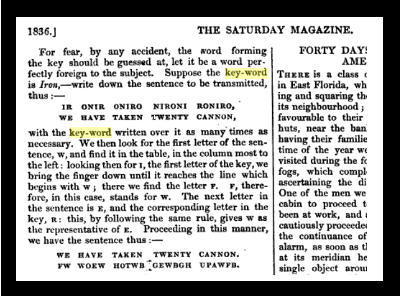Metaphoric Affinities

By Suman Gupta
Metaphoric Prefixes
This blog considers an open set of words and phrases which are descriptively qualified by a metaphoric prefix: ‘catch-’. Like ‘catchwords’, other sets of words and phrases are also named with metaphoric prefixes: ‘keywords’, ‘buzzwords’, ‘winged words’ (this last is uncommon in English, but has currency in the Slavic-language sphere -- more on this in later postings). The odd circumstance of the metaphoric prefix to categorise/describe certain words and phrases appears to associate these sets with each other. Invariably, pausing interrogatively on ‘catchwords’ recalls ‘keywords’, ‘buzzwords’ and the like. These could, we feel, overlap or somehow meld with the others; talking about the one implicates those others; their distinct senses are best sharpened with reference to each other; they must have a bearing on each other, mustn’t they? It is not obvious from the metaphors in question that they necessarily do. Possibly, it is the mere fact that they have these affixed metaphors which prods the expectation. Metaphors are notoriously slippery figures of speech, and these seem to refer to words/phrases which are descriptively slippery enough to call for metaphorical qualification. There is a preconceived affinity of slipperiness.
Metaphors
The OED defines a metaphor as: ‘A figure of speech in which a name or descriptive word or phrase is transferred to an object or action different from, but analogous to, that to which it is literally applicable’(sense 1) or ‘Something regarded as representative or suggestive of something else’ (sense 2). To my mind, the most interesting nuance of metaphors is that the logic of the analogy is often suggestive or open to interpretation rather than clearly demarcated or specified. ‘Catchwords’ suggest that such words generally do something analogous to things that catch or are caught, like cricket balls, contagious diseases, or fishing nets – but, unlike those examples, it is not clear in what sense, for whom and where and why, these words catch or are caught.
I am laying myself open to all sorts of quibbles by starting with a dictionary definition. Metaphors have attracted hefty and prolonged scholarly attention from various disciplinary perspectives (formatively, for instance, in Black 1962 [philosophy], Ricoeur 1975 [philology], Lakoff and Johnson 1980 [linguistics], Arbib and Hesse 1986 [science]). Any dictionary definition belies the conceptual depths that metaphors lead into. More rigorous discussion involves plunging into the shades of analogy – e.g., distinguishing between metaphor, metonym, simile, synecdoche, symbol, etc. – in different semantic contexts. But there’s more to this than that. It is a first principle in general linguistics that the form of a word has no intrinsic or emanant meaning (despite onomatopoeia, representative ideograms and hieroglyphs); meanings are allocated according to the relations between all the extant words and syntactical features of a language. Analogies involve a particular kind of relating between words. Analogies as in metaphors, which have unclear parameters but make immediate sense and are used constantly, appear to contain clues about how meanings are generally conferred and inferred. Metaphors promise insights into general processes of meaning making, and scholars with an interest in this home in on them like moths around a taper.
When we find sets of words which are named with metaphoric prefixes, the promise and mystery of metaphors light up. The metaphoric nominations seem to point to an alluring kinship, perhaps not so much in the content of the sets as in the very nuances of naming those sets with compound words. To take a different scholarly register, we may say that the metaphoric prefixes frame how the words they refer to are used, conceptualised, and studied. The metaphoric prefixes work like the frames of windows or paintings, putting some sensible boundaries around what is seen, or rather of how these words are contemplated. The metaphor of the frame has a serviceable application here, helpful as it has been to sociologists and media-studies scholars (as a conceptual device, the frame metaphor was influentially ploughed in Goffman 1972).
Ordinary Usage
Taken at face-value in everyday English, the metaphoric prefixes in ‘catchword’, ‘keyword’, ‘buzzword’ do not seem to allude to the same area. As metaphors, catch and key and buzz suggest quite different areas of analogy. The immediate associations in my mind are, at any rate, quite different:
- I could catch something that’s thrown or somebody I am chasing – it is an action;
- I could use a key to unlock a door or a box – it is an object;
- I can hear certain insects and machines buzz – it is a sound.
However, as prefixes in compound words to name kinds of words they seem to come together, either as being mutually clarifying or as being more or less similar. Almost every colleague to whom I mentioned my interest in catchwords immediately observed that these are akin to, and possibly the same as, keywords. When distinguished, that was on the understanding that both refer to words which are attributed a particular (social) significance or importance -- though perhaps each suggests different ways of foregrounding significance. Buzzwords, of relatively recent American provenance (the OED dates it back to the 1940s) is taken as more or less synonymous with catchwords, perhaps by the association of spreading by, respectively, some kind of contact (infection) in catching and by aural resonance in buzzing. In fact, the OED definition of ‘buzzword’ conflates all three: ‘A keyword; a catchword or expression currently fashionable; a term used more to impress than to inform, esp. a technical or jargon term’.
These are impressionistic notes with the fluid association of ordinary language usage in mind. By such usage, the metaphoric prefixes in question – catch, key, buzz – seem to pull in different directions. Equally, in such usage, the compound words with those prefixes – catchword, keyword, buzzword – seem to be pulled towards each other. Why? Perhaps, as I suggested, it’s simply the circumstance of having those metaphoric prefixes which draws them together. It’s down to our fixation with metaphors.
Text/Context
To think this through, something more than the loose associations of everyday usage is needed. Terms like significance/importance and, for that matter, usage are too open to be helpful. Significant to whom and where and why; usage by whom and where and why? We need, in other words, more of a sense of the context in which ‘catchwords’, ‘keywords’, ‘buzzwords’ make sense as such, despite or because of their metaphoric prefixes.
Insofar as the employment of words go, conventionally ‘context’ has (obviously) been considered apropos of ‘text’. Written/printed texts could provide the contexts to pin down the thrust of metaphoric prefixes … metaphors generally. In their earlier uses, catchwords and keys/keywords seem aligned and distinguishable by a written/printed-textual logic or a codexical logic. Samuel Johnson’s Dictionary of the English Language (1755) defined ‘catchword’ as ‘The word at the corner of the page under the last line, which is repeated at the top of the next page’ (to help printers get the sequence of pages right). He also had a sense (number 3) of ‘key’ as ‘An explanation of any thing difficult’, mainly applied to books or the expression of ideas. Nathan Bailey’s somewhat earlier English Dictionary (1721) didn’t have an entry for ‘catchword’ but did have a directly bibliographical one for ‘Key of a Book’: ‘an explication of persons or things which are so expressed as not to be easily understood by every reader’. From there the notion that ‘keywords’ have something to do with guidebooks, summaries, annotations, and indexes is not much of a stretch. More directly, where the text is a particular kind of cipher or code, a ‘keyword’ (‘key-word’) has designated the instrument to encode and decipher it. Keywords and catchwords were implicated in the business of written texts and their material forms, and in making sense of texts. Texts as context gave these metaphoric prefixes one kind of interpretive thrust. The written/printed-textual or codexical logic determined their usage, at least at one level, and perceptions of significance/importance.

‘The Art of Secret Writing (Cryptography)’, The Saturday Magazine, No. 255, London, 25 June 1836, 244-245
Through the 20th century, both catchwords and keywords have largely been disinvested from any necessary written/print-textual locus. When of interest, the written/print-textual logic is subsidiary to some larger context. Both allude now to a broad and fluid sphere of language usage, mostly transient and often unrecorded usage.
Under these circumstances, there are several ways in which contexts for conceptualising catchwords, keywords and other such may work.
- A specification of context may make their immediate usages and significances and relationships clear. If we say, ‘these are the catchwords of 1930s working-class Britain’ or ‘these are the keywords for late 20th century archaeologists’, contexts are being specified. That would help make sense of the thrust of the metaphoric prefixes and of the contents (the words/phrases named thus) of catchwords or keywords. But that begs the question: in such statements, the meaning of the terms ‘catchword’ and ‘keyword’ are already known before context specification – in what sense? To what extent do those terms determine the possibilities of context specification and to what extent does a context specification determine the nuances of those terms?
- A really large and continuous context could be appointed (larger than and including the written-printed-textual universe) to pin down catchwords, keywords and the like. That was the path influentially taken for keywords by Raymond Williams (1985) and those who followed his example (such as Grossberg, Morris, and Bennett eds. 2005): the context was culture (usually meaning, culture as apprehended in the present). The embrace of the term ‘culture’ raises some interesting complexities, which Williams commented upon as a keyword itself – and which he examined at length elsewhere. ‘Culture’ has proven to be a flexible way of referring to contexts in general. As for keywords, so for catchwords, buzzwords and the like, it appears as a frequent recourse for context indicator, albeit fuzzily. However, to set culture as the context doesn’t clarify how, for instance, any set of keywords come to be identified or selected as such. It seems that the savants of culture would simply know what the relevant keywords are. Knowing about culture helps recognise the keywords; knowing the keywords helps apprehension of culture. Another candidate for the really large and continuous context might be society. At any rate, these fuzzy edges and circularities call for pause.
- It might help to pare down the possibilities and scope of the metaphoric prefixes in ‘keywords’, ‘catchwords’ and the like, while keeping the demarcations of context open. That is the chosen path for most academic researchers or specialists. It involves defining those terms in a purposive way, so that they can be applied consistently and coherently for investigating the issue at hand. The slipperiness of those metaphoric prefixes could then be narrowly formulated, sprawling on a pin, wriggling on the wall of the treatise or scholarly paper. There are some nice little conundrums in the business of defining such terms, or defining terms generally in a specialist way. That too calls for pause, more of a pause than this breathless essay can afford.
These bullet-pointed anticipations may well be elaborated further on this blog page.
First Inset image: Giancarlo Foto4U, CC BY-SA 4.0 via Wikimedia Commons
